#CCTV Pathanamthitta
Text
CCTV Pathanamthitta | Aura Business Solutions | 9496638352

Aura Business Solutions: Leading the Way in CCTV Installation and Security Solutions in Pathanamthitta, Kerala
When it comes to top-notch security and surveillance solutions in Pathanamthitta, Kerala, Aura Business Solutions stands as a beacon of excellence and reliability. With 11 years of unparalleled expertise, Aura Business Solutions has carved a niche for itself as the leading CCTV installation service provider and dealer in Pathanamthitta and its surrounding areas including Pathanamthitta Town, Omalloor, Pandalam, Adoor, Kaipattoor, Thiruvalla, Ranny, Mallappally, Konni, Vakayar, Kadammanitta, Parakode, Kudassanad, Othara, and Elavumthitta.

Comprehensive CCTV and Security Solutions
At Aura Business Solutions, we pride ourselves on delivering quality CCTV and security systems tailored to meet the unique needs of both domestic and commercial sectors. As authorized dealers of Hikvision (India), a globally renowned name in the surveillance industry, we ensure that our clients receive only the best in terms of technology, efficiency, and reliability.
Our Range of Services
CCTV Installation Services: We specialize in the installation of high-definition CCTV cameras that provide clear and precise footage, ensuring your property is under constant surveillance. Our expert team handles the entire installation process, from site assessment to final setup, guaranteeing optimal coverage and functionality.
Security Systems: Beyond CCTV, we offer a wide range of security solutions including alarm systems, access control systems, and intercom systems. Our integrated security solutions are designed to provide comprehensive protection for your home or business.
Automation Solutions: Embrace the future with our cutting-edge automation solutions. From smart home systems to automated business processes, we help you streamline operations and enhance security.
Solar Solutions: In line with our commitment to sustainable practices, we offer solar solutions that help reduce your carbon footprint while ensuring a reliable power supply for your security systems.
Why Choose Aura Business Solutions?
Expertise and Experience: With over a decade of experience, we have honed our skills and knowledge to deliver superior security solutions.
Quality Products: As authorized dealers of Hikvision, we provide products that are known for their quality and durability.
Customized Solutions: We understand that each client has unique needs, and we tailor our services to meet those specific requirements.
Comprehensive Coverage: Our services are available across Pathanamthitta and its surrounding areas, ensuring that you receive prompt and efficient support wherever you are.




Service Areas
Aura Business Solutions proudly serves all major areas in Pathanamthitta, including but not limited to:
Pathanamthitta Town
Omalloor
Pandalam
Adoor
Kaipattoor
Thiruvalla
Ranny
Mallappally
Konni
Vakayar
Kadammanitta
Parakode
Kudassanad
Othara
Elavumthitta
Contact Us
Ensure the safety and security of your premises with Aura Business Solutions. Contact us today to learn more about our services and how we can help you achieve peace of mind with our state-of-the-art security solutions.
AURA BUSINESS SOLUTIONS
30/845-1, Opp. Bharat Petroleum,
Thiruvalla-Kumbazha Hwy, Pathanamthitta,
Kerala 689645
Contact : 9496638352
#cctv pathanamthitta#cctv installation pathanamthitta#pathanamthitta#kerala#cctv adoor#aura business solutions#cctv thiruvalla#cctv konni#cctv kadammanitta#cctv vakayar#cctv pandalam#cctv dealers pathanamthitta#cctv dealers pandalam#cctv shops pathanamthitta#cctv elavumthitta#cctv thumpamon#cctv shops#cctv dealers#hikvision dealers pathanamthitta#cctv installation service pathanamthitta#cctv camera price in kerala#cctv installation cost kerala#cctv companies in kerala
1 note
·
View note
Text

Learn and build your carrer with IPCS Global Pathanamthitta.Learn Digital Marketing,Python & Full Stack , Python & Data Science , Building Management System with us.
#pathanamthitta#keralis#digitalmarketing#python#datascience#full stack web development#india#education#training#technical seo#cctv#cctvinstallation
0 notes
Text
How countries are using technology to fight coronavirus
New Post has been published on https://apzweb.com/how-countries-are-using-technology-to-fight-coronavirus/
How countries are using technology to fight coronavirus

The rapid spread of Covid-19 has forced countries to use every trick in the book to contain the disease. Some countries, like South Korea and Singapore, have done a better job than, say, Italy and Spain.
Asian countries have used a range of technologies in their fight against the pandemic, raising questions about excessive surveillance and the violation of citizens’ privacy. Here is a snapshot of some of the tech tools being deployed in different countries.

Location Tracking
Location Tracking
Possibly the most commonly used technology by governments, tracking people’s whereabouts through the location information provided by their phones has been crucial to identifying where an infected person went before being quarantined and how many people were in close proximity to the patient. Israel has allowed its internal security agency the use of its citizens’ location data for 30 days. South Korea, China and Taiwan have also used location-tracking widely to limit the transmission of the virus. However, in Europe, which has stricter laws on data protection, Germany and Italy are using anonymised location data to identify public spaces where people are gathering in groups by defying lockdowns.
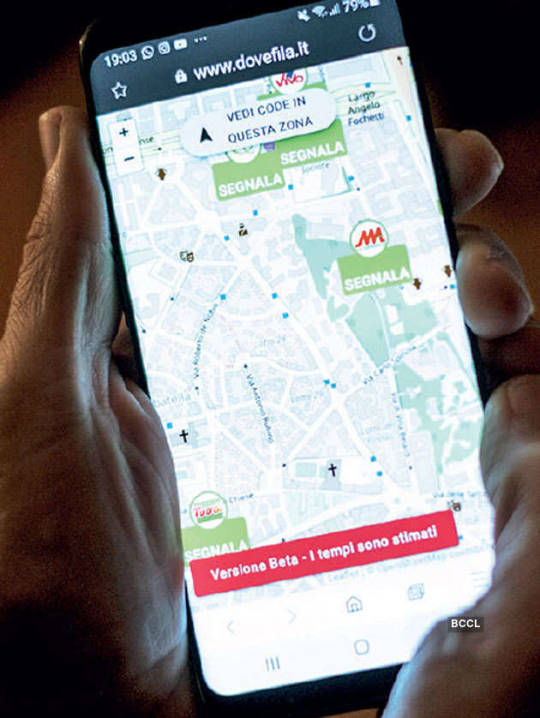
Mobile Apps
Mobile Apps
A startup in the UK recently launched an app for people to self-report their symptoms. C-19 Covid Symptom Tracker, which was downloaded 7.5 lakh times in three days, helps identify high-risk areas, among other things. South Korea has an app called Corona 100m that has mapped the locations of Covid-19 patients and alerts users if they come within 100 metres of an infected person.
India is also set to launch an app that will tell users if they came in contact with someone who later tested positive for Covid-19, as reported by ET on March 26. The app will be based on location data obtained from the infected person’s smartphone. It will also use short-distance Bluetooth signals between phones, like Singapore’s TraceTogether app, which helps authorities trace contacts of a patient.
In China, apps developed by Alibaba and Tencent give people a colour code based on their health condition and travel history. This code, decided by a big data-driven algorithm, will determine whether a person gains entry into a mall or a subway station, or can travel between cities.
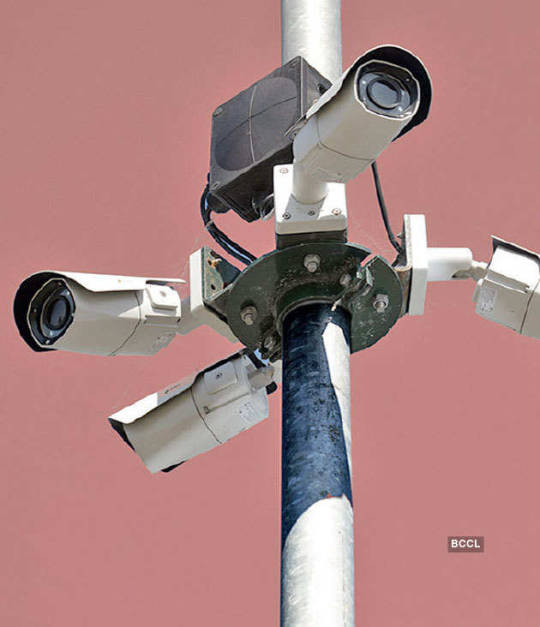
CCTVs
CCTVs
When a family of three in Kerala’s Pathanamthitta district tested positive for Covid-19 after returning from Italy, local authorities realised the family had visited several places and met many people for a week before they were quarantined. Reviewing CCTV footage from the areas they had been to was one of the methods the local administration used to track down 900 people the family could have potentially infected. South Korea and Singapore, too, have used CCTVs extensively in contact-tracing.

Smart Imaging
Smart Imaging
In an effort to enable contactless and rapid temperature detection, China is using AI-powered thermal cameras to identify those in a crowd who have a fever. The country is also deploying facial-recognition systems to identify those not wearing masks.
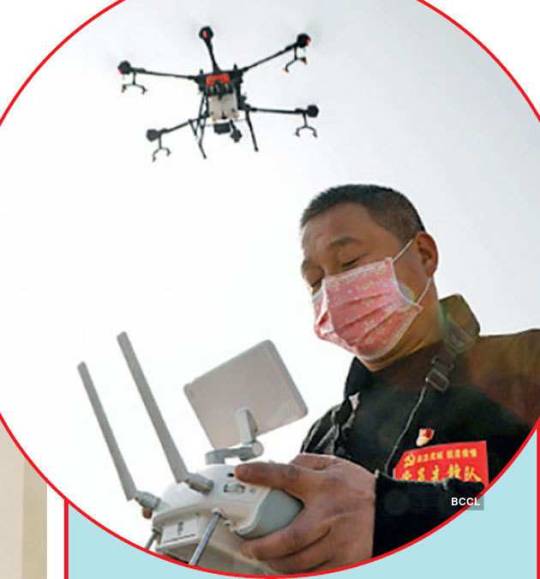
Drones
Robots & Drones
In early March, a new isolation ward was opened in Wuhan, the Chinese city where the coronavirus outbreak started. What’s interesting about this ward is that it is entirely manned by robots that take patients’ temperature, give them food and drugs, and disinfect the ward. China has also used robots in quarantine facilities, and so has Singapore to clean hospitals. The use of robots spares healthcare workers the risk of contracting the virus. In some parts of China, the police have used drones fitted with cameras and loudspeakers to disperse crowds and direct individuals in the streets to return home.

if(geolocation && geolocation != 5 && (typeof skip == 'undefined' || typeof skip.fbevents == 'undefined')) !function(f,b,e,v,n,t,s) if(f.fbq)return;n=f.fbq=function()n.callMethod? n.callMethod.apply(n,arguments):n.queue.push(arguments); if(!f._fbq)f._fbq=n;n.push=n;n.loaded=!0;n.version='2.0'; n.queue=[];t=b.createElement(e);t.async=!0; t.src=v;s=b.getElementsByTagName(e)[0]; s.parentNode.insertBefore(t,s)(window, document,'script', 'https://connect.facebook.net/en_US/fbevents.js'); fbq('init', '338698809636220'); fbq('track', 'PageView');
Source link
0 notes
Link
via Today Bharat Every time a new case was confirmed, it became routine for the people of the district to wait for the map, to identify who was vulnerable. On March 10, 60 people were under observation for COVID-19 in Kerala’s Pathanamthitta district. The statistics changed exponentially the very next day. A total of 892 people were under observation by March 11. So what changed in one day? The government had published a route map that showed where patients travelled to and initiated contact tracing. On March 8, a family of five tested positive in Pathanamthitta district. What got the officials worried was that three members of the family, who had arrived from Italy on February 29, had travelled quite extensively in the district. In two days, the district administration released a flow chart or route map tracing the places the family visited. The map had the duration of each visit, right from the day they landed at Kochi airport until they were admitted to the hospital on March 6. The flow chart was made public on the evening of March 10, and people were asked to alert officials at the district help desk centre if they had been to the same places at the given time frame. A route map aims to identify primary and secondary contacts of an infected person and place asymptomatic persons in quarantine and test the samples for symptomatic patients. The route map of the Italy-returned family, who were on a holiday in Kerala, showed that they had visited banks, bakeries, jewellery stores and had even taken public transport. And to be extra careful, maps factor in thirty minutes to two hours extra after a patient's visit. The first map released by Kerala “As soon as we released the route map on March 10, we received 103 calls that day alone. Over the course of the following six days, we received 60 more calls from people. We were able to identify about 1,000 people who may have come in contact and then placed them in quarantine,” an epidemiologist at the Pathanamthitta help desk centre, told TNM. The health department officials had earlier said that the family was reluctant to share their travel details. “We suggested the idea of releasing a route map using this thread, without revealing any personal details. When we started receiving calls after the first route map was released, we started releasing the route maps for other cases too, using whatever information we had,” said the epidemiologist. Identifying high-risk, primary low-risk The idea of a map or flowchart was then done in every other district that reported COVID-19 cases. Every time a new case was confirmed, it became routine for the people of the district to wait for the map, to identify who was vulnerable. Allowing the public to self-identify also helped Kerala to place more people under home quarantine. On April 2, Kerala had 265 COVID-19 cases, and 1,65,934 people were in quarantine (home and hospital included). On April 15, Maharashtra had 2,916 cases and Tamil Nadu 1,242 COVID-19 cases. Though the number of positive cases are significantly higher, the number of people in quarantine in both these states are much lower. While 69,738 people are in home quarantine and 5,617 people are in institutional quarantine in Maharashtra, Tamil Nadu has 94,450 people in home quarantine and 1,876 under hospital isolation. When an Italian tourist tested positive for coronavirus in Kerala on March 13, officials learnt that he had been staying in Thiruvananthapuram’s Varkala for 15 days. The same day, the team of medical officers swung into action to identify the high-risk contacts, conducted telephone interviews and collected the list of the Italian’s co-passengers onboard Vistara UK 897 from Delhi to Thiruvananthapuram on February 27. “On March 13, we had 40% of the initial information required to prepare the map. The next day, the field staff started collecting more information and collating the list of places and high-risk contacts. The same evening, we put out the first route map of the Italian tourist. On March 15, we updated the map as we identified more primary and secondary contacts,” said a professor at Kottayam Medical College, who did not wish to be named. The professor was part of the team that prepared the route map. Incidentally, by March 13, the day the tourist tested positive, 226 people were under observation in Thiruvananthapuram district. On March 14, another 308 people were identified. By March 15, when the map was fully updated, a total of 1,449 people were placed under surveillance in the district. The route map of the Italian tourist According to experts who worked in teams that identified contacts, a route map helps in identifying the missing links or contacts. “We are normally able to identify high-risk contacts and alert them. What we will not be able to identify are the primary low-risk contacts, which are people who interacted with the patient without knowing their travel history or healthcare workers who looked after them. This is where a map helps,” explained Dr Gayathri, superintendent of Taluk headquarters hospital in Malayinkeezhu, Thiruvananthapuram, who is the in-charge of the district investigation team. In the case of the Italian tourist, the team was able to identify over 110 contacts, which included 30 high-risk contacts. All his contacts were tested and fortunately all of them tested negative for coronavirus. The calls According to Dr Gayathri, help centres receive the maximum number of calls within the first two days of releasing the route map. “These are mostly calls expressing their apprehensions regarding their presence at the same place and within the mentioned duration,” she said. Additionally, more the number of places the COVID-19 patient travelled and halted at, more is the number of calls; for example, if the patient attended functions with large gatherings, including weddings and funerals, or visited a supermarket, unlike visiting a small store. “We get a lot of calls from the staff and customers of public institutions or organisations that the COVID-19 patient had visited,” she said. Many people call the COVID-19 helpline (DISHA) at 1056 or the Coronavirus Helplines (set up at the Collectorates) mentioned on the route map. Many others call the doctors at the nearest Public Health Centres, who, in turn, alert the district teams. “The initial route map may not be correct as the dates may vary. In one case, when dates varied while verifying the details, we had to call the banks and then revise the map. To get more clarity, we verify with CCTV footage,” explained Dr Gayathri. When are route maps needed? The route maps were mainly released for COVID-19 patients who came from a foreign country and travelled extensively, without self-quarantining, before being tested positive. There were, of course, some exceptions. For instance, a Congress leader in Idukki district tested positive for coronavirus on March 26. He had no history of travel to another country or state. He was not tested when he initially went to the hospital with certain symptoms. He continued his work as a public servant and travelled within the district until the testing guidelines changed and he subsequently tested positive. Fearing that as a public figure he had interacted with several people, including politicians, the district administration released his route map to trace contacts. According to D Sajith Babu, Collector of Kasaragod district, route maps are not required for every COVID-19 case. “A route map is required only when officials cannot ascertain where the person had gone and how many people he may have come in contact with,” he explained. Kasaragod district had to released only two route maps out of the 184 positive cases so far in the district. Almost all foreign returnees had either gone directly to the hospital from the airport or been at home. An exhaustive map was released for a businessman who had returned from Dubai and travelled to various places before going to his hometown. “The man had over 4,000 contacts and did not disclose his whereabouts before being admitted. Besides, he was not disclosing the correct details. If we had published a route map based on factually incorrect details, it would have created more confusion. We had to verify the details he shared and then map his travel. And that was the only case where we required a route map, although it did not really help us” the Collector explained. The district teams that TNM spoke to added that most patients who tested positive had only travelled from the airport to their houses, and immediately quarantined themselves. Interestingly, that is one of the reasons that all districts, except Ernakulam, released a route map. Ernakulam district, which has reported about 25 cases so far, saw its first case on March 9 when a three-year-old child from a family that returned from Italy via Dubai tested positive. The parents also eventually tested positive. As part of the universal screening at the airport, it was detected that the child had fever. The child was immediately admitted to the Ernakulam Medical College hospital while the parents were placed in the isolation ward. The co-passengers and a few airport staff, too, were placed under observation. If route map is removed from the equation “Imagine, Person A went to a supermarket and stood next to an infected person. Person A is unaware of this, not even when he starts running a temperature. The person may then interact with his children and elderly members of the family. But, once the route map is published, Person A will be aware of his contact with an infected person, be alert, inform the health officials and get himself tested,” said the professor, pointing out that a route map is an effective tool in the initial containment of the disease. According to the epidemiologist in Pathanamthitta, “If we do not get these response calls from members of the public, we will not be able to detect if there is community spread, which happens when the source of the infection cannot be traced. We have managed to trace at least 85% of the primary and secondary contacts through the route map and have been monitoring them daily via the call centre for 28 days.” Further explaining the importance of the route map, Dr Gayathri said, “COVID-19 is a communicable disease that spreads fast. If it was a disease with a longer incubation period (time between exposure to the virus and showing symptoms), we will gradually trace the contact, call them and treat if required. But in the case of COVID-19, there is an urgent need to identify the high-risk contacts and quarantine them soon.” The professor noted why it is important to release a route map as part of contact tracing as soon as the first two to three cases are reported. “Once there is an established outbreak, that is, exponential growth in cases, these maps are not useful. Taking precautions, assuming the person may have come in contact with others, is the only way and hence the route map.”
0 notes
Text
technology against coronavirus: How countries are using technology to fight coronavirus
The rapid spread of Covid-19 has forced countries to use every trick in the book to contain the disease. Some countries, like South Korea and Singapore, have done a better job than, say, Italy and Spain.
Asian countries have used a range of technologies in their fight against the pandemic, raising questions about excessive surveillance and the violation of citizens’ privacy. Here is a snapshot of some of the tech tools being deployed in different countries.
Location Tracking
Location Tracking
Possibly the most commonly used technology by governments, tracking people’s whereabouts through the location information provided by their phones has been crucial to identifying where an infected person went before being quarantined and how many people were in close proximity to the patient. Israel has allowed its internal security agency the use of its citizens’ location data for 30 days. South Korea, China and Taiwan have also used location-tracking widely to limit the transmission of the virus. However, in Europe, which has stricter laws on data protection, Germany and Italy are using anonymised location data to identify public spaces where people are gathering in groups by defying lockdowns.
Mobile Apps
Mobile Apps
A startup in the UK recently launched an app for people to self-report their symptoms. C-19 Covid Symptom Tracker, which was downloaded 7.5 lakh times in three days, helps identify high-risk areas, among other things. South Korea has an app called Corona 100m that has mapped the locations of Covid-19 patients and alerts users if they come within 100 metres of an infected person.
India is also set to launch an app that will tell users if they came in contact with someone who later tested positive for Covid-19, as reported by ET on March 26. The app will be based on location data obtained from the infected person’s smartphone. It will also use short-distance Bluetooth signals between phones, like Singapore’s TraceTogether app, which helps authorities trace contacts of a patient.
In China, apps developed by Alibaba and Tencent give people a colour code based on their health condition and travel history. This code, decided by a big data-driven algorithm, will determine whether a person gains entry into a mall or a subway station, or can travel between cities.
CCTVs
CCTVs
When a family of three in Kerala’s Pathanamthitta district tested positive for Covid-19 after returning from Italy, local authorities realised the family had visited several places and met many people for a week before they were quarantined. Reviewing CCTV footage from the areas they had been to was one of the methods the local administration used to track down 900 people the family could have potentially infected. South Korea and Singapore, too, have used CCTVs extensively in contact-tracing.
Smart Imaging
Smart Imaging
In an effort to enable contactless and rapid temperature detection, China is using AI-powered thermal cameras to identify those in a crowd who have a fever. The country is also deploying facial-recognition systems to identify those not wearing masks.
Drones
Robots & Drones
In early March, a new isolation ward was opened in Wuhan, the Chinese city where the coronavirus outbreak started. What’s interesting about this ward is that it is entirely manned by robots that take patients’ temperature, give them food and drugs, and disinfect the ward. China has also used robots in quarantine facilities, and so has Singapore to clean hospitals. The use of robots spares healthcare workers the risk of contracting the virus. In some parts of China, the police have used drones fitted with cameras and loudspeakers to disperse crowds and direct individuals in the streets to return home.
if(geolocation && geolocation != 5 && (typeof skip == 'undefined' || typeof skip.fbevents == 'undefined')) { !function(f,b,e,v,n,t,s) {if(f.fbq)return;n=f.fbq=function(){n.callMethod? n.callMethod.apply(n,arguments):n.queue.push(arguments)}; if(!f._fbq)f._fbq=n;n.push=n;n.loaded=!0;n.version='2.0'; n.queue=[];t=b.createElement(e);t.async=!0; t.src=v;s=b.getElementsByTagName(e)[0]; s.parentNode.insertBefore(t,s)}(window, document,'script', 'https://connect.facebook.net/en_US/fbevents.js'); fbq('init', '338698809636220'); fbq('track', 'PageView'); }
Source link
The post technology against coronavirus: How countries are using technology to fight coronavirus appeared first on Invest Ops.
from Invest Ops https://ift.tt/3aroM5f
0 notes
Text
technology against coronavirus: How countries are using technology to fight coronavirus
The rapid spread of Covid-19 has forced countries to use every trick in the book to contain the disease. Some countries, like South Korea and Singapore, have done a better job than, say, Italy and Spain.
Asian countries have used a range of technologies in their fight against the pandemic, raising questions about excessive surveillance and the violation of citizens’ privacy. Here is a snapshot of some of the tech tools being deployed in different countries.
Location Tracking
Location Tracking
Possibly the most commonly used technology by governments, tracking people’s whereabouts through the location information provided by their phones has been crucial to identifying where an infected person went before being quarantined and how many people were in close proximity to the patient. Israel has allowed its internal security agency the use of its citizens’ location data for 30 days. South Korea, China and Taiwan have also used location-tracking widely to limit the transmission of the virus. However, in Europe, which has stricter laws on data protection, Germany and Italy are using anonymised location data to identify public spaces where people are gathering in groups by defying lockdowns.
Mobile Apps
Mobile Apps
A startup in the UK recently launched an app for people to self-report their symptoms. C-19 Covid Symptom Tracker, which was downloaded 7.5 lakh times in three days, helps identify high-risk areas, among other things. South Korea has an app called Corona 100m that has mapped the locations of Covid-19 patients and alerts users if they come within 100 metres of an infected person.
India is also set to launch an app that will tell users if they came in contact with someone who later tested positive for Covid-19, as reported by ET on March 26. The app will be based on location data obtained from the infected person’s smartphone. It will also use short-distance Bluetooth signals between phones, like Singapore’s TraceTogether app, which helps authorities trace contacts of a patient.
In China, apps developed by Alibaba and Tencent give people a colour code based on their health condition and travel history. This code, decided by a big data-driven algorithm, will determine whether a person gains entry into a mall or a subway station, or can travel between cities.
CCTVs
CCTVs
When a family of three in Kerala’s Pathanamthitta district tested positive for Covid-19 after returning from Italy, local authorities realised the family had visited several places and met many people for a week before they were quarantined. Reviewing CCTV footage from the areas they had been to was one of the methods the local administration used to track down 900 people the family could have potentially infected. South Korea and Singapore, too, have used CCTVs extensively in contact-tracing.
Smart Imaging
Smart Imaging
In an effort to enable contactless and rapid temperature detection, China is using AI-powered thermal cameras to identify those in a crowd who have a fever. The country is also deploying facial-recognition systems to identify those not wearing masks.
Drones
Robots & Drones
In early March, a new isolation ward was opened in Wuhan, the Chinese city where the coronavirus outbreak started. What’s interesting about this ward is that it is entirely manned by robots that take patients’ temperature, give them food and drugs, and disinfect the ward. China has also used robots in quarantine facilities, and so has Singapore to clean hospitals. The use of robots spares healthcare workers the risk of contracting the virus. In some parts of China, the police have used drones fitted with cameras and loudspeakers to disperse crowds and direct individuals in the streets to return home.
if(geolocation && geolocation != 5 && (typeof skip == 'undefined' || typeof skip.fbevents == 'undefined')) { !function(f,b,e,v,n,t,s) {if(f.fbq)return;n=f.fbq=function(){n.callMethod? n.callMethod.apply(n,arguments):n.queue.push(arguments)}; if(!f._fbq)f._fbq=n;n.push=n;n.loaded=!0;n.version='2.0'; n.queue=[];t=b.createElement(e);t.async=!0; t.src=v;s=b.getElementsByTagName(e)[0]; s.parentNode.insertBefore(t,s)}(window, document,'script', 'https://connect.facebook.net/en_US/fbevents.js'); fbq('init', '338698809636220'); fbq('track', 'PageView'); }
Source link
The post technology against coronavirus: How countries are using technology to fight coronavirus appeared first on Investium.
from Investium https://ift.tt/2UofJw8
0 notes
Text
Coronavirus
New Post has been published on https://www.getlifehealthy.com/coronavirus-outbreak/
Coronavirus
What is a coronavirus?
Coronavirus term refers to a large group of viruses or families of viruses that cause a wide range of illnesses and infections in humans and several animals including birds, mammals like camels, cats and bats. Due to their crown-like projections on the surfaces, coronaviruses got their name. The virus resembles like a crown when viewed under an electron microscope. “Corona” in Latin means “halo” or “crown”.
Coronavirus can infect both animals and people and can cause illnesses of the respiratory tract. The infections can range from the common cold to dangerous conditions like Severe Acute Respiratory Syndrome, or SARS, which sickened thousands of people around the world and killed nearly 800 — during an outbreak in 2003. Middle East Respiratory Syndrome, or MERS, first reported in Saudi Arabia in 2012, is also caused by a coronavirus.
How is it transmitted?
Most respiratory viruses are transmitted through coughing and sneezing, but troubling new evidence suggests people who are infected with the new virus may be spreading it before they even know that they have any symptoms. It has now become clear there is a significant and sustained transmission from person to person.
How coronavirus disease spread?
While coughing and sneezing, an infection spread into the air and spread the virus.
While touching or shaking hands with an infected person can also pass the virus.
Making in contact with a surface or object that has a virus and while touching nose, eyes or mouth.
How to prevent an infection
Regular hand washing
During coughing and sneezing, cover mouth and nose.
Properly cooked meat and eggs.
Avoid contact from the person showing symptoms of respiratory illness.
Therefore, we can say that there is no proper cure and treatments including taking care of yourself and over-the-counter (OTC) medication.
Do proper rest and avoid overexertion.
Drink enough water.
Avoid smoking and smoky areas.
Take medicine to reduce pain and fever.
Use a clean humidifier or cool mist vaporizer.
Reference: https://www.cdc.gov/coronavirus/about/index.html
Where did the new coronavirus outbreak start?
Passengers wear masks to prevent an outbreak of a new coronavirus in a subway station, in Hong Kong, Wednesday, Jan. 22, 2020. The first case of coronavirus in Macao was confirmed on Wednesday, according to state broadcaster CCTV. The infected person, a 52-year-old woman, was a traveler from Wuhan. (AP Photo/Kin Cheung)
On Jan. 8, The New York Times reported that Chinese researchers had identified a new coronavirus as the pathogen behind a mysterious illness that had sickened 59 people in Wuhan.
The cases were linked to a market that sold live fish, animals, and birds. The market was later shut down and disinfected.
Past outbreaks of similar illnesses, including SARS, also are believed to have emerged from live animal markets. The coronavirus that causes MERS is transmitted to humans by camels.
Bats are considered a possible source, because they have evolved to coexist with many viruses, including coronaviruses. But it is very possible the virus was transmitted from bats to an intermediate animal, and then to humans.
Is there a test for the virus? What is the treatment?
There is a diagnostic test that can tell if you are infected. It was developed by the Centers for Disease Control and Prevention, based on genetic information about the virus provided by the Chinese authorities.
The main treatment for coronavirus is supportive care, including making sure the patient is getting enough oxygen, and using a ventilator to push air into the lungs if necessary, Dr. Vaishampayan said. Patients should rest and drink plenty of fluids “while the immune system does its job and heals itself,” she said.
No drugs have been approved for any coronavirus diseases, including the Wuhan coronavirus, though an antiviral medication called remdesivir appears to be effective in animals and was used to treat a patient in Washington State.
Chinese officials are also experimenting with at least one other H.I.V. drug to treat the infection.
How long will it take to develop a vaccine?
A coronavirus vaccine is still months away — and perhaps years. With each new outbreak, scientists typically have to start from scratch. After the SARS outbreak in 2003, it took researchers about 20 months to get a vaccine ready for human trials
Recent news on Coronavirus
The death toll from the monthlong coronavirus outbreak has continued to climb, rising to 811. New cases have surged by double-digit percentages in the past 11 days, with no sign of a slowdown.
More people have now died in this epidemic than in the severe acute respiratory syndrome, or SARS, outbreak of 2002-2003 in mainland China. During that outbreak, 349 people died.
The new figures from China’s Health Commission on Wednesday showed that 65 people died on Tuesday and that 3,887 more people had been infected. So far, 24,324 people have been infected.
Health experts say the death toll is likely to rise because of the large number of infections. The mortality rate of the coronavirus, about 2 percent so far, appears to be far lower than SARS, which has a mortality rate of about 10 percent.
Epidemics caused by other members of the coronavirus family, SARS and MERS, have had high death rates: 10 percent for SARS, and about 35 percent for MERS
Health care workers are particularly vulnerable. At a hospital in Seoul, South Korea, in 2015, one man with MERS transmitted it to 82 patients.
Reference:https://www.nytimes.com/2020/02/04/world/asia/coronavirus-china.html
Hyundai, the world’s fifth-largest carmaker, has said that it was suspending production lines at its car factories in South Korea, one of the first major manufacturers to face severe supply chain issues because of the coronavirus.
Reference: https://www.nytimes.com/2020/02/04/world/asia/coronavirus-china.html#link-74faa45e
The United States has begun its second airlift of American citizens out of China.
Reference: https://www.nytimes.com/2020/02/04/world/asia/coronavirus-china.html#link-7525f945
Britain and France urged their citizens to leave China.
https://www.nytimes.com/2020/02/04/world/asia/coronavirus-china.html#link-f8d7640
2019–20 Coronavirus outbreak by country[55]
Country or region
Confirmed
Deaths
Reference
Mainland China
24,337
811
[55]
Japan
33
0
[55]
Thailand
25
0
[55]
Singapore
24
0
[55]
Hong Kong
18
1
[56]
South Korea
18
0
[55]
Australia
13
0
[55]
Germany
12
0
[55]
Taiwan
11
0
[55]
United States
11
0
[55]
Macau
10
0
[55]
Malaysia
10
0
[55]
Vietnam
10
0
[55]
France
6
0
[55]
Canada
5
0
[55]
United Arab Emirates
5
0
[55]
India
3
0
[55]
Philippines
3
1
[55]
Italy
2
0
[55]
Russia
2
0
[55]
United Kingdom
2
0
[55]
Belgium
1
0
[55]
Cambodia
1
0
[55]
Finland
1
0
[55]
Nepal
1
0
[55]
Spain
1
0
[55]
Sri Lanka
1
0
[55]
Sweden
1
0
[55]
28 territories
24,567
811
As of 5 February 2020. History: China; others
What are health authorities doing to contain the virus?
China has taken drastic actions to bar people from leaving affected areas, though 5 million people departed Wuhan alone before the restrictions went into effect.
Residents have been told to wear masks in public to prevent the spread of the disease. Two new hospitals for coronavirus patients are being erected; the first opened on Monday.
Reference: https://www.aljazeera.com/news/2020/02/china-races-build-hospitals-coronavirus-outbreak-grows-200205033913557.html
Governments around the world have been screening incoming passengers from China for signs of illness, and some have gone further, barring entry to people from China. Russia and Mongolia have closed most of their borders with China. Australia said it will evacuate citizens from Wuhan and quarantine them for 14 days on Christmas Island.
C.D.C. teams are also providing assistance with state health investigations of infections, including contact-tracing. C.D.C. teams have also offered to send public health experts to China to help with the investigation and containment efforts.
Coronavirus in India: First confirmed case in Kerala
On 30 January, the Union ministry of health and family in an official statement said a student from Kerala, who was studying at Wuhan University and travelled to India, has tested positive for the coronavirus. Further, the ministry stated that the patient is kept in isolation and is being closely monitored.
News agency PTI told that in Kerala, one person each from Thrissur, Thiruvananthapuram, Pathanamthitta, and Malappuram and three from Ernakulam district have been kept in isolation wards of various health centres.
Several people are showing symptoms of coronavirus and have been quarantined in different cities of India including Hyderabad, Mumbai and New Delhi. According to PTI, till Monday (27 January, 2020), a total of 33,552 passengers arrived in India from China in 155 flights that have been screened.
Three patients are also kept in Isolation Ward of Delhi’s RML Hospital for a few days but now it is confirmed that tests are negative for Coronavirus.
As a precautionary measure, thermal screening has been extended to 21 airports in India including New Delhi, Kolkata, Mumbai, Chennai, Bengaluru, Hyderabad Kochi, Gaya, Guwahati, Vizag, Varanasi, and Goa.
In the midst of this, an Indian doctor from Tamil Nadu in Siddha and Ayurvedic medicine has claimed to have found a ‘herbal’ cure to the virus. So far, there has been no cure found to the disease by any scientists, and the only progress made is that a vaccine is being developed, but it may not be available for another year.
Reference: https://www.news18.com/news/buzz/indian-doctor-from-tamil-nadu-claims-to-have-found-a-ayurvedic-cure-to-the-corona-virus-2480587.html
Reference: https://www.indiatvnews.com/news/india/coronavirus-herbal-cure-tamil-nadu-doctor-dr-thanikasalam-veni-claim-585033
0 notes
Text

CCTV Camera Installation across Pathanamthitta, Kerala - AURA BUSINESS SOLUTIONS
Call : +91 94966 38352
Pathanamthitta, Konni, Vakayar, Omalloor, Pandalam, Kulanada, Adoor, Pallickal, Nooranad, Thiruvalla, Kumbanad, Othara, Muthoor, Kozhencherry, Mallappally, Eraviperoor.
#cctv pathanamthitta cctv installation Pathanamthitta#cctv adoor#cctv pathanamthitta#cctv installation pathanamthitta#cctv shops in pathanamthitta#hikvision dealers pathanamthitta#cctv camera pathanamthitta#cctv suppliers
0 notes
Text
Top CCTV Camera, Security Systems and Automation Solutions provides in Kerala
AURA BUSINESS SOLUTIONS
Call/Whatsapp: 9496638352
www.auracctv.in
www.aurabusinesssolutions.in



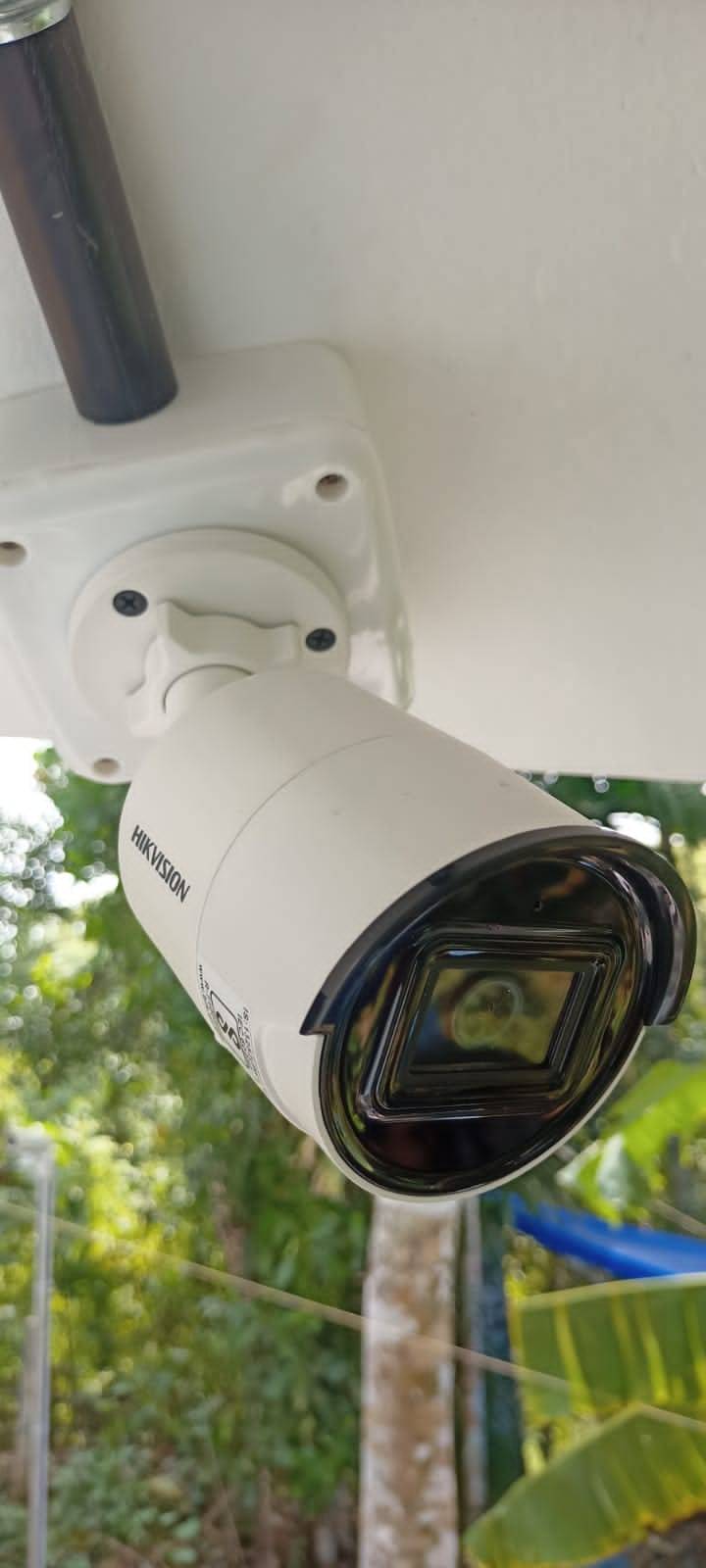
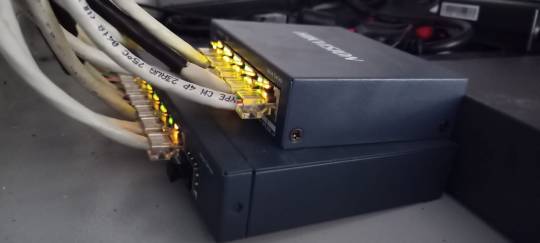
#cctv kerala#best cctv installation service in Kerala#cctv installation kerala#cctv dealers kerala#automation companies in kerala#cctv suppliers kerala#top cctv company kerala#hikvision kerala#hikvision dealers kerala#cctv installation Alappuzha#cctv installation kollam#cctv installation kottayam#cctv installation pathanamthitta#alappuzha#coimbatore
2 notes
·
View notes
Text
CCTV Dealers, CCTV Installation in Pathanamthitta | Aura Business Solutions

Looking to fortify your security measures in Pathanamthitta, Kerala? Look no further! Aura Business Solutions brings top-tier CCTV camera installation services right to your doorstep. Specializing in a wide array of security solutions, including CCTV cameras, burglar alarms, automatic gates, access control systems, attendance systems, and more, we ensure unparalleled quality and commitment in every project.
As authorized dealers of Hikvision in India, we guarantee premium products and professional installations tailored to your needs. Our service network spans across Pathanamthitta Town and its surrounding areas, including Pathanapuram, Adoor, Parakode, Koodal, Enath, Pallickal, Kodumon, Kalanjoor, Thumpamon, Pandalam, Vallicode, Pramadom, Chenneerkkara, Omalloor, Thannithodu, Konni, Mezhuveli, Elanthur, Mylapra, Kadapra, Niranam, Peringara, Thiruvalla, Kaviyoor, Kallooppara, Ezhumattur, Kaviyur, and Naranganam.
With expertise in full home automation, shutter automation, video door phones, and solar power plants, we offer comprehensive security solutions to safeguard your property and loved ones. Trust in our experience and reliability to provide the utmost protection for your peace of mind.
Whether you're in need of CCTV installation, seeking reputable CCTV dealers, or searching for security camera suppliers, Aura Business Solutions is your trusted partner in Pathanamthitta. Elevate your security standards today with our premium services and secure your premises with confidence. Contact us now to experience the best in CCTV camera solutions!



#cctv dealers pathanamthitta#cctv camera pathanamthitta#cctv installation pathanamthitta#cctv shops pathanamthitta#cctv price in pathanamthitta#cctv suppliers in pathanamthitta#hikvision dealers in pathanamthitta#security camera pathanamthitta#aura business solutions#aura pathanamthitta#pathanamthitta#pathanamthitta town#kumbahza#omalloor#thiruvalla#ranni#mallappally#othara#adoor#kudassanad#pandalam#kulanada#vettoor#top cctv installation pathanamthitta#cctv company pathanamthitta#ip camera pathanamthitta#cctv camera authorised dealers pathanamthitta#home cctv installation pathanamthitta
0 notes
Text
youtube
Hikvision Dealers in Kerala | Aura Business Solutions | 9496638352
#cctv dealers kerala#cctv installation kerala#cctv suppliers kerala#cctv shops in kerala#cctv companies in kerala#aura business solutions#pathanamthitta#alappuzha#kollam#kottayam#Youtube
0 notes
Text
Security Alarm (Burglar Alarm) Dealers Kerala | Aura Business Solutions

Security Alarm (Burglar Alarm / Intrusion Detection) AURA BUSINESS SOLUTIONS +91 9496638352
https://www.auracctv.in/
#security alarm dealers kerala#security alarm#burglar alarm#intrusion detection system#cctv#aura#aura business solutions#alappuzha#kollam#pathanamthitta#kottayam#haripad#mavelikara#chengannur#pandalam#konni#ranny#vakayar#adoor#nooranad#charummood#kayamkulam#oachira#karunagappally
0 notes
Text
Unveiling the Future: The Significance of Home Automation and Surveillance | AURA BUSINESS SOLUTIONS

In an era defined by technological advancements, the integration of smart home automation and surveillance has become more than just a luxury; it's a necessity. The ability to control and monitor your home remotely not only enhances convenience but also elevates security levels. In this article, we'll explore the profound importance of home automation and surveillance, shedding light on why these technologies are essential in today's dynamic world. Additionally, we'll guide you through the process of selecting the best service provider to ensure a seamless and secure smart home experience.
The Importance of Home Automation:
Enhanced Convenience: Home automation systems bring unprecedented convenience by allowing you to control various aspects of your home with a simple tap on your smartphone. From adjusting the thermostat to turning off lights, the power is in your hands, even when you're miles away.
Energy Efficiency: Smart home technologies contribute to a more sustainable lifestyle by optimizing energy usage. Automated thermostats, lighting, and appliances ensure that energy is consumed efficiently, reducing both your carbon footprint and utility bills.
Increased Security: Home automation extends beyond convenience; it significantly bolsters your home's security. With smart locks, cameras, and doorbell systems, you can monitor and control access to your home, enhancing your overall safety and peace of mind.
Home Entertainment Integration: Create an immersive entertainment experience by integrating your audio and visual systems into your smart home network. Effortlessly control your home theater, music, and lighting for a cinema-like atmosphere.

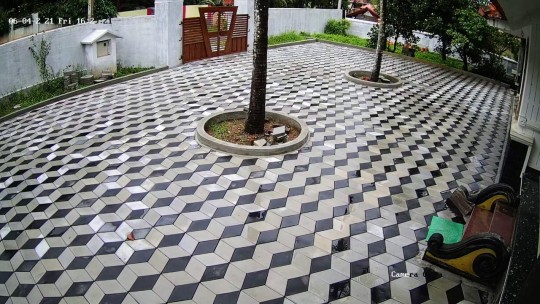
The Significance of Surveillance:
Deterrence of Criminal Activity: Visible security cameras act as a deterrent, dissuading potential intruders and burglars. Knowing that their activities are being recorded increases the likelihood of criminals avoiding your property altogether.
Real-Time Monitoring: Surveillance systems offer real-time monitoring, providing you with immediate alerts in case of suspicious activities. Whether it's a package delivery or an unexpected visitor, stay in the know with a comprehensive surveillance network.
Peace of Mind: Whether you're at work or on vacation, surveillance cameras offer unparalleled peace of mind. Check in on your property at any time, ensuring that everything is secure and in order.

Choosing the Best Service Provider:
Evaluate Experience and Reputation: Research potential service providers thoroughly. Look for companies with a solid track record in the field and positive customer reviews. A provider with experience is more likely to offer reliable services.
Scalability and Compatibility: Ensure that the chosen provider's systems are scalable to meet your evolving needs. Additionally, compatibility with various smart home devices ensures a seamless integration process.
Security Measures: Given the sensitive nature of home automation and surveillance, prioritize providers that prioritize security. Look for robust encryption, secure data storage practices, and regular software updates to safeguard your information.
Customer Support and Warranty: Opt for a service provider known for excellent customer support. A responsive support team can address any issues promptly. Additionally, inquire about warranties and service agreements to guarantee long-term satisfaction.
For more information please Call / WhatsApp +91 9496638352
#cctvinstallation#cctv shops near me#cctv dealers kerala#cctv dealers alappuzha#cctv dealers pathanamthitta#cctv dealers kollam#cctv haripad#cctv mavelikara#cctv kayamkulam#cctv adoor#cctv thiruvalla#hikvision dealers#home automation kerala#automatic gate#solar power plant kerala#gate automation#video door phone#security alarm#burglar alarm
0 notes
Text

AURA BUSINESS SOLUTIONS - CCTV, Security Systems and Automation solutions provider in Kerala.
9496638352
Our Products & Services
CCTV Camera Installation
Burglar Alarm
Access Control and Attendance System
Gate Automation
Home / Office Automation
EPABX, IP-PBX, Intercom Systems
Video Door Phones
Public Address Solutions
Software Solutions and more..
Our services are available across Kollam, Alappuzha, Pathanamthitta, Kottayam districts of Kerala.
Links:




#cctv dealers kerala#cctv installation kerala#security systems dealers kerala#automatic gate dealers kerala#remote gate dealers kerala#epabx dealers kerala#hikvision dealers kerala#cctv dealers alappuzha#cctv dealers kollam#cctv dealers pathanamthitta#cctv dealers kottayam#burglar alarm#home automation#security camera#hikvision kerala#aura#aura cctv#aura business solutions
1 note
·
View note
Text
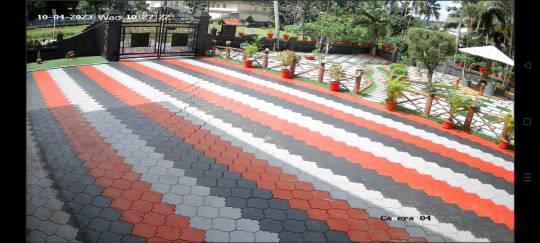


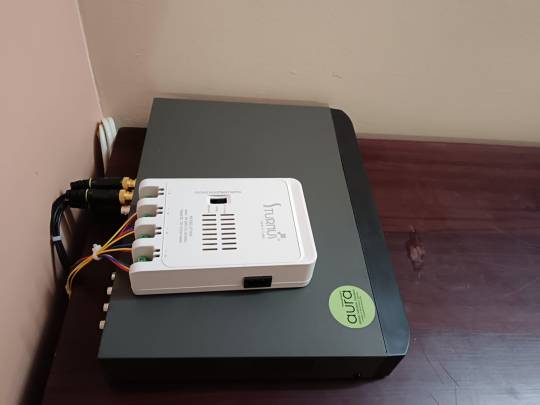
CCTV CAMERA INSTALLATION Pathanamthitta
AURA BUSINESS SOLUTIONS | 9496638352
#cctv#cctvcamera#cctvinstallation#cctvshops#cctv online#cctv_pathanamthitta#cctvshopspathanamthitta#cctvinstallationpathanamthitta#hikvision_dealer_pathanamthitta#aura#aura_cctv#aurabusinesssolutions#pathanamthitta#konni#vakayar#pandalam#elanthoor#tiruvalla#adoor
1 note
·
View note
Text

Learn CCTV Course with IPCS Global Pathanamthitta.For more details visit our website https://ipcsglobal.com/ipcs-global-pathanamthitta/
0 notes